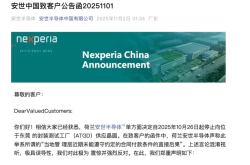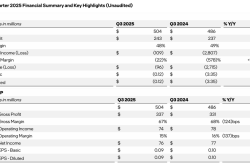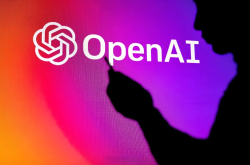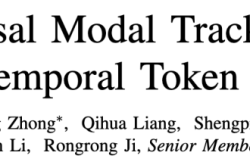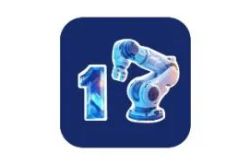No One Wants to Be a “Northern Unitree” Anymore
![]() 11/10 2025
11/10 2025
![]() 540
540
Editor: Di Xintong
In the first half of 2025, during our frontline research in the humanoid robot industry, the Embodied Intelligence Research Society was frequently asked by industry insiders: Which leading enterprise in the north directly competes with Unitree? At that time, to address this industry concern, we published an article titled “South Unitree, North XX: The Market Seeks a Northern Representative,” focusing on the core issue of comparing industrial strengths between the north and the south.
In just a few months, the competitive landscape of the humanoid robot sector has undergone dramatic changes. Although a “universally recognized northern representative” has yet to emerge, the market's focus has quietly shifted away from the simplistic “north-south benchmarking” framework. As competition intensifies, the sector has evolved into multiple factions differentiated across various dimensions.
Correspondingly, the market evaluation criteria have also shifted from “who can directly benchmark against Unitree” to a deeper consideration of a company's ability to secure positions in segmented dimensions.
Interestingly, there is no unified definition of “segmented dimensions,” as they are judged from different perspectives to assess a company's value. The most common classifications are: from a deployment perspective, there are the ontology school and the large model + ontology school; from a deployment scenario perspective, there are the commercial school and the industrial school. Different starting points lead to varying perceptions of a company's “value” among investors and other industry insiders.
From the perspective of the Embodied Intelligence Research Society, neither “factional disputes” nor “hierarchical rankings” can fully capture the true commercial value of a humanoid robot enterprise. Change often strikes unexpectedly, overturning everyone's perceptions. Companies that seem ordinary now may not always remain at the bottom.
The essence of this phenomenon lies in the industry's anticipation of filling the leadership void left by the search for the “next Unitree,” coupled with the FOMO (Fear Of Missing Out) sentiment among investors and practitioners who fear missing out on the sector's dividends. Together, these factors are driving the market to accelerate its transition from “extensive benchmarking” to “precise positioning.”

Industrial School vs. Commercial School: Clashing Over Feasibility
Decades from now, when people become accustomed to the presence of humanoid robots, they will likely be surprised by a historical detail: people once argued over where humanoid robots should be used.
Although the deployment scenarios for humanoid robots are already highly diversified at this stage, with humans attempting tasks they both want and do not want to do, they can be broadly categorized into just two types: industrial and commercial. (Family use remains a topic for the future.)
From the industrial school's perspective, this group has a well-defined business logic. Firstly, the structural labor shortage in factories is an objective reality; secondly, factory automation upgrades are an irreversible trend; finally, the structured environment and standardized processes in factories are highly compatible with the current technological level of humanoid robots.
Therefore, humanoid robots, as representatives of new-quality productive forces, are born with the banner of “glory in entering factories,” and the labor shortages in factories represent a foreseeable and sizable market.
Moreover, there is a clear rhythm to entering factories. Almost all enterprises focusing on factories start with simple tasks like inspection and transportation, with only a few attempting flexible and non-standardized work. The reason is simple: inspection and transportation have lower technical requirements, which can improve the success rate of humanoid robots in practical applications, aligning more closely with factories' core pursuit of safe production.
Enterprises deploying in industrial scenarios also exhibit a particularly interesting phenomenon: almost no one argues anymore about whether to use bipedal or wheeled robots. Instead, they unanimously choose wheeled robots. Zhiyuan's recent large-scale deployment in factories also opted for wheeled robots. It seems that in industrial scenarios, the lower body configuration of humanoid robots is no longer a point of contention. After all, bipedal robots still suffer from instability and low mobility.

Image Source: Zhiyuan Robotics
However, what the industrial school does not tell you is that there is a structural contradiction in humanoid robots entering factories at this stage.
While factories do have labor shortages, most positions require flexible and non-standardized operations, tasks that current humanoid robots struggle to complete. The transportation and inspection tasks that humanoid robots are actually targeting are already being performed quickly and efficiently by AGVs (Automated Guided Vehicles) and robotic arms, making humanoid robots, which are relatively more expensive and slower, somewhat awkward.
These unspoken realities of the industrial school are precisely the core of the commercial school's rebuttal.
From the commercial school's perspective, the industrial sector will struggle to deploy high-value tasks in the short term, making it an economically unviable proposition. Secondly, the structured environment and standardized processes in industrial settings are relatively simplistic and do not align with the closed loop of embodied intelligence, which requires absorbing data from real-world environments to feed back into technological iterations. Conversely, commercial scenarios, with their highly dynamic environments, complex tasks, and frequent interactions, are more conducive to the iteration of humanoid robots.
More importantly, commercial scenarios have a higher tolerance for errors, which does not disrupt normal operations and increases user acceptance. Frequent interactions with humans can also lay the groundwork for eventual household use. Therefore, in the eyes of the commercial school, commercial scenarios offer high-value data and vast commercial potential. The consistency of tasks in certain scenarios facilitates the transfer of humanoid robot capabilities and expands their application boundaries.
From a commercial deployment perspective, tasks favored by enterprises include hotel reception and exhibition hall guidance, which can take over some of the tedious and repetitive tasks performed by humans. While factories predominantly use wheeled humanoid robots, the commercial sector favors bipedal robots. On one hand, such scenarios and tasks do not have stringent stability requirements; on the other hand, bipedal robots appear more appealing and attractive.
Currently, both the industrial and commercial schools have representative enterprises, each nurturing their own version of a “Unitree.” The essence of their competition lies in their predictions about technological development and insights into commercial needs, vying for a larger share of the market.

Ontology School vs. Ontology + Model School: The Essence is a Business Strategy Game
Regardless of whether they enter factories or commercial settings, the consensus is that the upper limit of embodied intelligence lies in “brainpower.” However, beneath this consensus, there is a clear divergence on whether to develop the brain.
Some ontology manufacturers insist on maintaining control over the upper limit. In their view, only by honing their own brain capabilities and successfully deploying them can they explore the productive value of humanoid robots to its fullest. Like workers on the job, having strong limbs alone is insufficient; understanding the how and why enables mastery of more skills.
Therefore, this group chooses a fully self-developed technical route of “ontology + large model,” entering the market with a brain that better understands the physical world and an ontology structure more suited to work tasks. Typical representatives include Star Era and Qianxun Intelligence.
Taking Star Era as an example, it explained to the Embodied Intelligence Research Society that the reason for choosing the ontology + model path is that this path is both a means and an end. “Universal brain + universal ontology” can better combine the hardware and software of robots, enabling co-evolution and granting robots stronger adaptability and versatility in the physical world.

Image Source: Star Era
On the brain side, Star Era's embodied large model, ERA-42, integrates frequency-divided VLA (Vision-Language-Action) and world models into a single model that combines vision, understanding, prediction, and action. It achieves full-body dexterous operation of highly free-degree humanoid robots through a single end-to-end VLA model, enabling the completion of hundreds of complex operations via voice commands, including flexible item sorting, barcode scanning, and the use of screwdrivers and pipettes.
On the ontology side, Star Era adopts a hardware generalization and modularization approach, allowing it to adapt to multiple ontology configurations while also enabling on-demand assembly like LEGO, improving the compatibility between the ontology structure and scenario requirements.
A brain capable of understanding natural language and issuing precise operational signals, paired with a flexibly operating ontology, has enabled Star Era to achieve bulk product deliveries. Among the global top 10 tech giants by market value, nine are customers of Star Era.
Qianxun Intelligence also firmly chooses a “software-hardware synergy” approach, believing that focusing solely on ontology has limited value: hardware capabilities have not changed significantly from more than a decade ago, with core breakthroughs lying in the model “brain.” Hardware without a brain cannot achieve general intelligence, but focusing solely on the brain without deployment is also insufficient: models need to be trained on specific hardware structures to develop “muscle memory,” and precise motion control cannot be achieved without the ontology.
On the model side, Qianxun Intelligence recently introduced the “think-and-do” OneTwoVLA large model, endowing robots with thinking and reasoning capabilities. It integrates the traditionally separate “reasoning brain” and “action limbs” into a single Transformer model, achieving “simultaneous reasoning and execution” for the first time and improving success rates in long-term tasks by 30% compared to pure action VLA models.

Image Source: Qianxun Intelligence
For example, when executing the command “help me rinse the beef,” the model can determine in real-time “when to reason and when to execute” and possesses error detection and recovery capabilities (such as quickly adjusting after grasping an object off-target).
Correspondingly, Qianxun Intelligence's hardware ontology design is strongly bound to the needs of the VLA model, avoiding issues like “inverse kinematics failure” (such as a robotic arm being unable to grasp an object when fully extended). Through bottom-layer architectural optimization, it ensures that the action commands output by the model can be precisely executed by the hardware. For instance, the “think-and-do” capability of the OneTwoVLA model requires real-time hardware response to switches between reasoning and execution without delay or stuttering.
In stark contrast to the fully self-developed route, “pure ontology school” manufacturers adhere to a differentiated strategic logic. Some representative enterprises believe that “brain” research at this stage remains a high-investment, low-return “money burner” and not the best time for an all-in commitment. Others focus their commercialization efforts on vertical scenarios like scientific research and competitions, where the emphasis is more on ontology performance and interface adaptability. Therefore, they concentrate their core resources on refining ontology structures and optimizing supply chain costs.
Unitree Technology is a typical representative of the ontology school. Its ontology structure and components are already top-tier in the industry, and its motion control capabilities frequently challenge industry limits. However, it has never focused on brain capabilities. While this may be related to the background of its founder, Wang Xingxing, it has indeed paved the way for Unitree to achieve annual revenues exceeding 1 billion yuan through commercialization.
Based on its absolute investment in ontology structure, Unitree not only has an advantage in joint refinement but has also driven cost reductions through self-development, seizing the domestic and international scientific research market with an absolute advantage of tens of thousands of yuan in price and becoming the standard hardware carrier for secondary development.
Although relatively young compared to Unitree, Zhiqing Robotics is also a rising star in the ontology school. Its ontology design is not only practical but also aesthetically pleasing, and its motion control capabilities stand out with its leading straight-knee gait. In terms of commercialization, based on its ontology performance, Zhiqing has chosen a “hardware open source + ecosystem profit-sharing” model to enter the market. The upcoming combat competition in December will further showcase the commercial prototype of this representative of the ontology school.
At present, both the ontology - focused school and the ontology + large - model school boast outstanding representative enterprises. These enterprises have ascended to become absolute leaders in their respective market segments by adopting differentiated technical approaches. Although some insiders in the industry dismiss the "pure ontology school" as having no promising future, contending that it is, in essence, no more than a remote - controlled toy lacking revolutionary significance, the Embodied Intelligence Research Society holds a different view. From the perspective of industry practice, there is no absolute "superiority or inferiority" between these two technical routes. Fundamentally, they are differentiated choices made by industry participants based on their own resource endowments, technological accumulations, and market assessments. The fully self - developed school places its bets on long - term general capabilities, whereas the pure ontology school enjoys a short - term advantage in scenario deployment.
However, it is noteworthy that the primary market clearly shows a preference for the narrative logic of "ontology + large model." This preference is far from coincidental. The large - model sector has already fully demonstrated its commercial potential through the large - scale application of AI technology.


